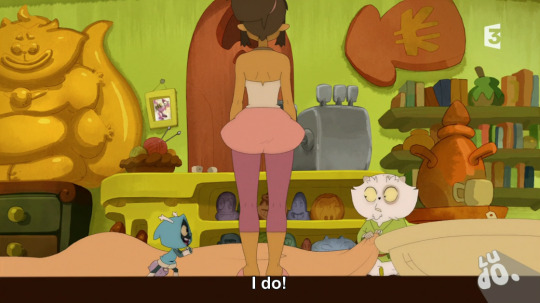#2D Material Report
Explore tagged Tumblr posts
Text
2 D Materials Market, Market Size, Market Share, Key Players | BIS Research
2D materials are substances that are just a few atoms thick, usually one layer. The most famous 2D material is graphene, discovered in 2004 by physicists Andre Geim and Konstantin Novoselov, which led to a Nobel Prize in Physics in 2010. Graphene is a single layer of carbon atoms arranged in a hexagonal lattice, with incredible mechanical strength, electrical conductivity, and thermal properties.
The 2D materials market is projected to reach $4,000.0 million by 2031 from $526.1 million in 2022, growing at a CAGR of 25.3% during the forecast period 2022-2031.
2 D Materials Overview
2 D Materials focus on addressing the environmental, social, and economic challenges associated with mining activities while ensuring long-term resource availability.
Key components of Sustainable Mining
Reducing energy consumption
Minimizing greenhouse gas emissions
Conserving water
Market Segmentation
1 By Application
• Metallic Minerals
Industrial Metals
Precious Metals
Iron Ore
• Non-Metallic Minerals
Coal
Others
By Process
Underground Mining Surface Mining
By Mining Equipment
• Drill Rigs
• Bolters
• Dozers
• Loaders
By Energy Source
1 Battery
Lithium-Ion Battery
Lead Acid Battery
Others
2 Hydrogen Fuel Cell
3 Bio-Fuel
By Region
North America - U.S., Canada, and Mexico
Europe - Germany, Russia, Sweden, Spain, and Rest-of-Europe
China
U.K.
Download the report and get more information @ 2 D Materials Market
.Major Key Players
• NanoXplore Inc.
• Cabot Corporation
• Thomas Swan & Co. Ltd.
• Ossila Ltd
• ACS Material LLC
Download the sample page click here @ 2 D Materials Market
Demand – Drivers and Limitations
The following are the demand drivers for the global 2D materials market:
• Growing adoption of 2D materials in energy storage • Strong growth of 2D materials in the healthcare industry • Growing demand for transparent conductive films in electronics industry
The market is expected to face some limitations as well due to the following challenges:
• Lack of large-scale production of high-quality graphene • High cost of production
Recent Developments in the Global 2D Materials Market
• In September 2021, Colloids Limited introduced a new infrastructure for customized polymeric materials using its ground-breaking graphanced graphene masterbatch advanced technologies. Due to its extraordinary qualities, graphene has attracted a lot of attention. Additionally, it has exceptional mechanical characteristics as well as superior thermal and electrical permeability.
• In December 2021, Black Swan Graphene Inc. signed a legally enforceable letter of intent to purchase Dragonfly Capital Corp., in a backward merger agreement for $31.5 million. On December 13, 2021, Black Swan Graphene Inc. and Dragonfly Capital Corp. agreed to exchange shares in an opposite merger transaction. Stockholders of Black Swan would then obtain 15.2 consideration shareholdings for every ordinary Black Swan share they own.
Challenges in the 2D Materials Market
Despite the excitement surrounding 2D materials, there are notable challenges that the industry must overcome:
Scalability of Production: Producing high-quality 2D materials at scale remains a challenge. Researchers are exploring various methods, such as chemical vapor deposition (CVD), but the cost and complexity of manufacturing must be addressed for widespread adoption.
Integration into Existing Technologies: For 2D materials to be fully integrated into mainstream applications, they must seamlessly work with existing materials and processes. Compatibility issues with traditional manufacturing methods could slow down the transition.
Cost of Raw Materials and Processing: Currently, the cost of producing 2D materials is relatively high. Developing cost-effective manufacturing techniques is crucial for making these materials economically viable.
The Future of 2D Materials
As the 2D materials market continues to evolve, we are likely to see a wave of disruptive innovations across multiple sectors. With ongoing research, improved production techniques, and increasing investment, these materials could fundamentally reshape industries ranging from electronics to energy and healthcare.
While challenges remain, the unique properties of 2D materials offer unprecedented opportunities for technological advancement. The next few years will be crucial in determining how quickly and effectively these materials can be integrated into real-world applications, but one thing is certain: 2D materials are poised to revolutionize the future of advanced materials.
Key Questions
Q What are the main bottlenecks for scaling up 2D materials, and how can they be overcome?
Q Where do you see the greatest need for additional R&D efforts?
Q How does the supply chain function in the global 2D materials market for end users?
Q What are the key business and corporate strategies of 2D material manufacturers involved in the global 2D materials market?
Q What are the advantages of the emerging 2D materials that are entering the market, and how are they used in various applications?
Q Which applications (by end user) and products (by material type) segments are leading in terms of consumption of the 2D materials market, and which of them are expected to witness high demand growth during 2022-2031?
Q Which regions and countries are leading in terms of consumption of the global 2D materials market, and which of them are expected to witness high demand growth during 2021-2031?
Q What are the most promising opportunities for furthering the efficiency of 2D materials?
Q How has COVID-19 impacted the 2D materials market across the globe?
Q How the semiconductor crisis impacted the 2D materials market?
Conclusion
The 2D materials market is set to grow exponentially as more industries recognize the potential of these atom-thin materials. With ongoing advancements in production techniques, new discoveries of 2D materials, and innovative applications across sectors, the future looks incredibly promising.
0 notes
Text
Humans and Boredom II
The planet cracker.
A devilish name that somehow still does not do this type of Human ship justice. Arrays of massive gravity hooks capable of tearing out kilometers wide and deep chunks of mass from any celestial object one of them decides to settle in orbit of.
The process is slow and tedious and, luckily, unsuitable for any practical military application, but unimaginably rewarding nonetheless. Once a chunk has been lifted, a fleet of harvester drones meticulously tears it further apart and separates into individual minerals and any other categorizable substances. From there the internal refineries of the planet cracker process them further into more usable metals, alloys, resins, and countless other resources. Finally, another fleet of transport ships ferry those back to where they are needed.
The land based production capacity of an entire (small) planet, with a single (albeit metropolis sized) ship, crewed by no more than a hundred Humans and thousands of drones.
One of these immense beasts - The Hardy Gal - was stationed around one of Saturn's moons - Epimetheus - that was recently voted out of the global popularity contest "Who's Even Heard of This One?" and thus sentenced to become part of the Dyson Ring.
The drone fleet that was supposed to be tearing up the unfortunate little moon, however, was recently recalled for refitting after a report showed a key part was manufactured using an outdated guideline by a suspiciously licensed corporation, that was also caught up in an unrelated embezzlement scandal.
Suffice to say that chief Gravity Master Boris Fruischtyen didn't have much to do. Laws and regulations do not permit any unsupervised extraction results to just be left in orbit. Oh no, can't preemptively arrange chunks for processing later, nope, "efficiency? what's that?". *sigh* Lift, hold, harvest, repeat.
Boris would have nothing to do, except the gravity hook arrays were a set of fifty per array, and The Hardy Gal had eight arrays. Four hundred individually aim-able and moveable chunks of matter.
While his day job was not very productive for now, his social media activity shot through the roof. There's a lot you can draw with four hundred "pixels" and the literal cosmos as your canvas and backdrop.
His personal favorites were water features and creatures set against the blue of Saturn, and he arranged quite a few of the extinct whales and penguins too. Additionally, every day he would fulfill one of the audiences top ranking requests.
Through these he discovered he has a fascinatingly good sense for flower compositions, especially from unusual angles. It's odd. He's only ever seen flowers in images and videos, perhaps lacking actual real life flowers to compare to allows his imagination to fill in the gaps in a way referencing factual knowledge would limit him. Who knows.
Despite having access to a three dimensional canvas, he preferred to keep things flat.
"What can I say, 2D is better. *chuckle*"
However, that doesn't mean he keeps things simple. The gravity hooks are quite good at selective manipulation, they have to be to target certain spots beneath a whole lot of other matter (which is then raised alongside the "elevator" matter). He demonstrated how the same image can look wildly different if you just change the "pixels" from squares to spheres, or how certain material compositions change color when squeezed more densely.
His personal favorite part is the finishing touch. After he's had a drone go out and stream his latest piece from plenty of angles for the viewers, he gives the whole image a simultaneous and gentle push back towards the moon. After a few touching hours of people in chat saying farewell, sharing personal stories and just asking questions Boris is always happy to answer, the image impacts the surface where the majority of parts were extracted from in a spectacular show of minor impacts and a shower of debris. Too bad it doesn't have an atmosphere, just imagine how cool it'd look burning up on reentry.
#humans are deathworlders#humans are space oddities#humans are space orcs#humans are space australians#humanity fuck yeah#humans are artists#boredom#carionto
190 notes
·
View notes
Text
Live Emotion Review from 4Gamer Part 1 - Rhythm Game
Lots of new info and images.

4Gamer has released a full report detailing the gameplay experience of Live Emotion. You can see their full report in Japanese on their official website.
Part 2 - Story Part 3 - Home Screen and MiniPri
Song Selection:

Some of the initially available songs are:
My Cutie... Drive me Crazy - Lv14, Sing attribute (pink icon).
OVER THE TOP - Lv16, Sing attribute
Michibiki Hikari - Lv12, Charm attribute (yellow icon)
KIR☆MEKI EMOTION - Lv19, Sing attribute,
SONG LETTER - Lv.17, Dance attribute (blue icon)
GLORIOUS ANGELS - Lv16(?), Charm attribute
Maji Love 1000% - RAINBOW STAR ver.- Lv14, Charm attribute
QUARTET☆NIGHT - Lv.??, Sing attribute.
At the bottom left of the image are various filters and search functions for songs. On the right are details for the selected song. In this case displaying the members that sing Kirameki Emotion, buttons underneath to check your ranking (the other has kanji I cant make out, potentially 'completion rewards'), and the option to swap between MV options (detailed later).
Song Difficulty:



Each song has four difficulties; Easy, Normal, Hard, and Expert.
Each difficulty has different amounts of lanes that notes will approach on. 2 on Easy, 4 on Normal, and 6 on Hard and Expert.
The song's 'Lv' refers to how hard it is in the chosen difficulty. For example, a Lv19 song on Hard will be harder than a Lv16 song on Hard.
Music Video Options:










Shots from each group's Live Emotion Theme Song MV showcasing alternate outfits. Likely from an initial set of Normal or Rare Pieces.

Not every song has a Music Video (MV). For songs that do, you can choose between:
2D/No MV - A static stage background. Or, in Live settings, the player can set up to 7 still illustrations as the background so you can still look at your favourite idol (presumably like this Kira above?)
Normal 3D - Unknown. Possibly a static front facing camera version of the MV.
Rich 3D - Also unknown, but maybe this is the versions of the MVs we've seen so far with different camera angles.
Clearing Songs:


Clearing a song with an MV unlocks Live Viewing, allowing you to watch the MV whenever you like.
Clearing any song will also reward you with materials needed to level up Pieces, and raise the Level and Affection of Emotional Pieces used.
It will also add a stamp to a point card called the 'Music Card'. Once the Music Card is fully stamped you can unlock a new song and the Music Card will reset. There will be different amounts of stamps added to the Card depending on conditions met.
42 notes
·
View notes
Text

Specially designed transistors allow researchers to 'hear' defects in a promising nanomaterial
An international research team led by NYU Tandon School of Engineering and KAIST (Korea Advanced Institute of Science and Technology) has pioneered a new technique to identify and characterize atomic-scale defects in hexagonal boron nitride (hBN), a two-dimensional (2D) material often dubbed "white graphene" for its remarkable properties. This advance could accelerate the development of next-generation electronics and quantum technologies. The team reported that it was able to detect the presence of individual carbon atoms replacing boron atoms in hBN crystals. This discovery was made possible by listening to the electronic "noise" in specially designed transistors, akin to hearing a whisper in a quiet room.
Read more.
#Materials Science#Science#Nanotechnology#Defects#Transistors#White graphene#Boron nitride#Boron#Nitrides#2D materials#Materials characterization#Electronics#van der Waals
7 notes
·
View notes
Note
How DO you think universe signatures work? I don't think I've seen many theories or discussions on it but I also haven't been looking for them either
HOHOOO UNIVERSE SIGNATURES. ok. as i was rewatching scenes so i could write this, my theories fucking blinked out of existence :) there is as much consistency to universe signatures as there is to the atsv timeline.
alright lets see how incoherent this gets
btw i’m not using the word ‘dimension.’ incorrect scientific terminology in an animated spider man comic movie franchise about the multiverse? couldn’t be me. i already let them keep their holograms*
itsv came out in 2018 and is reported to have taken four years to make. in 2014, we couldn’t have made atsv; the technology hadn’t been developed, because there wasn’t yet a movie to demand it. (usually when the question comes up during production, the team has to invent an answer. like animating violet’s hair in the incredibles in 2004, or water in finding nemo in 2003, or fur for sully in the monsters inc movies, or the entire animation process of 2019’s klaus, or reflections on the cars in cars—) this, combined with itsv being set entirely in miles’s own universe, means that the b team’s (noir, peni, ham) universe signatures changing between universes can be attributed to 1. less worldbuilding than atsv and 2. lack of technological ability in 2014-2018 (no diss to the og animators obviously, itsv is fucking gorgeous)
but that’s a boring doylist analysis. i wonder if we can get watsonian. atsv, which was likely produced from 2017 or so to 2023, explores four more universes, rather than sticking to miles’s. surely it’ll have more answers!
i went through the entire movie to see what changes. not gonna bore y’all with a scene to scene analysis, so i’ll summarize: the only person who substantially differs between dimensions is gwen (abstract in E-65, solid but still pastel in E-1610, slightly more painted in E-50101, abstract again in E-928 during emotional scenes). hobie’s collage changes to match the tone or color palette of the universe around him, but doesn’t take on its signature. other than that, the only effect any universe has on every character is with its light, and the only effect to overpower a universe signature is a portal.
let’s pretend that in an infinite multiverse, such a thing as a standard can be set, and that standard is Comic Style. comparing it to itsv, where peni and ham gained depth from previously 2d-esque universes, it seems as though some things don’t change—general color palette and extreme stylistic divergences from the aforementioned standard, eg when atsv peni is styled in 2d—and some change universally—like universe-specific volumetric light, eg in itsv when E-1610’s halftone-style light gives peni depth and in atsv when E-928’s holographic-style light does the same in a different way.
then portals. they distort the space around them in their style of origin: organic portals always have miles’s universe’s signature because that’s where they were born; any portal opened with an E-928 watch has miguel’s orange holographic hexagon, no matter who uses them or where they open to; portals opened with hobie’s homemade watch are always collage, though they take on the color palette of the universe they’re opened in. that means portals have to be watch-specific, prolly based on the materials’ universe of origin, but in that case, hobie’s would look a lot like miguel’s since he harvested most if not all of the parts from E-928. so it has to be specific to either the person who made it or the universe it was made in.
but neither of those make sense! the degree of separation from universe/person that apparently applies to the watches doesn’t apply to items left in other universes. E-1610’s rubik’s cube retains its color and volume in noir’s universe, but the sweater gwen leaves on miles’s bed isn’t abstract, and the shoes she nicked from E-138 aren’t scrappy. even hobie’s watch is rendered in strangely crisp 3d, brightly colored and noticeably not collage.
and of course, both universe-specific light theory and portals-overpower-all theory aren’t totally consistent. hobie’s only properly illuminated when he’s in his base colors. but maybe that’s a quirk of atsv? he doesn’t glitch like paper in the radius of a portal—renaissance vulture didn’t glitch like paper either, maybe that’s just how glitching works! maybe it’s always that tv-signal-bright blocky mess! maybe there is one concrete rule in all this!!!!!

noir’s universe (during his intro scene, at least) comprises of three solid colors: black, light gray, and white, and volume/shadow is communicated through the intensity of halftone used. in itsv and in atsv he’s always in black and white, no matter the color of the light around him. he’s also the ONLY CHARACTER who glitches differently. noir breaks down in black and white!! when the team is lit up by gwen’s portal in atsv’s final scene he’s the only one not distorting in color!!!!! what the fuck man!!!!!!!!!
there isn’t one cohesive multiversal rule for how universe signatures act and interact with different universes, much as i’d love to have one. it raises too many questions and doesn’t give quite enough evidence to study. the closest i can theorize is color/style generally sticks and lighting/spatial physics generally doesn’t, and since that’s relatively simple, i’ll use it. gwen gets her photo-booth-app watercolors and peni/pav/ham/noir get just a little more rendered.
theories i have seen floating around that i also enjoy
gwen’s universe requires people to be in tune with it, to reflect their emotions—implying that the floaty abstract art during her scene with her father is diagetic. so when she’s not in her universe, she’s not like her universe.
hobie’s universe signature necessitates that he doesn’t conform to any other style
on that note, so would ham’s, because cartoon logic defeats reality logic
hope you enjoyed!! or at least were amused by my suffering <3
*do not get me started on holograms
#spider man: into the spiderverse#spider man: across the spider verse#fan theory#but not really#i just compiled my observations and shouted angrily at them for a while#this got way longer than i wanted it to be#considering how little evidence there actually is for any be-all end-all rule#also strangely i noticed that noir’s intro scene and last itsv scene don’t match#like E-90214 are DIFFERENT in different scenes#the first one is solid but the last one is RENDERED?????#wh?????????#why isnt his own goddamn universe consistent#rude as hell of him#love he tho <3#thanks for asking anon!!#finally fucking changed the 298 to 928 idk how i did that smh
50 notes
·
View notes
Text
Episode 22 - The Giant Ploomers (part 1)
Very glad to report that I am writing this liveblog from my pc yet again.

It's so nice to see him doing some actual work, instead of just Fucking Around.

Kittyyyyy.

I know that it's cartoon logic, and all, but like... It's so unserious that she is made fun of for this to me.
If I saw these in real life, I would think, "these people have a REALLY weird carpet that's made from the same fabric as underwear. And that's okay."
A kids cartoon being unrealistic. Smh, smh...





Guy who just realized he admitted to a weird fucking thing that most people would NOT understand. Including me. Because I don't understand.
Also, this entire moment is a Certified Kerubim Face Journey by far. There are like 20 different expressions here.

He is so... weird. And I both detest and love him for it.


Coward Simone vs. Joris, the bravest warrior of the World of Twelve.

Lou's birthday is somewhere in the summer. Quite funny, considering Joris's is in winter. That's two characters we can pinpoint (though, I wouldn't call "knowing the exact date of Joris's birth" pinpointing, but I digress.)

For some reason, I have so many Emotions about this goddamned tower being a reoccurring location for Lou and Kerubim.
It's a nice little spot, yeah, but through being a nice little spot, it gained ~emotional significance~

(Guy who thinks a lot voice)
I like it that Kerubim even as a young little boy has unrestricted access to huppermage materials that he's probably read. Bit of a win for the "Kerubim studied necromancy" truthers among us.
His ideas of gifts are "skull" and "spellbook"
Ouughughgh (keels over) do you think he chooses gifts for Joris's birthday like that too.
This spellbook is so cringe for immediately falling apart in his paws. What if I wanted to see Kerubim interact with Forbidden Materials, hm?


Cats are Liquid is an indie 2D platformer game from 2015, it is about depression, and it is available for free on Google Play.

I know it's very obvious, especially with bands being a thing, but records are a thing in the World of Twelve. Which is cool.
...God, you have no idea how hard it is not to use this moment to plug my character playlists for Kerubim, Joris, and Atcham.

This you?



This you?




This you - this you - this you?
Anyway, hot take, but:
I think this episode takes place before Dance Against Boowolves due to him becoming a bit okay with girly things in it.
Next time you say that Atom is the first nonbinary character in Krosmoz, remember Kerubim. You're making her sad.


If someone did this to me, ripping this shit off instead of peeling them slowly and gently, I would do unspeakable evils onto them.


She is a very patient and gentle soul for simply beating them up.

A fate worse than death, Keke. A fate worse than death.
11 notes
·
View notes
Text
MIT engineers grow “high-rise” 3D chips
New Post has been published on https://thedigitalinsider.com/mit-engineers-grow-high-rise-3d-chips/
MIT engineers grow “high-rise” 3D chips


The electronics industry is approaching a limit to the number of transistors that can be packed onto the surface of a computer chip. So, chip manufacturers are looking to build up rather than out.
Instead of squeezing ever-smaller transistors onto a single surface, the industry is aiming to stack multiple surfaces of transistors and semiconducting elements — akin to turning a ranch house into a high-rise. Such multilayered chips could handle exponentially more data and carry out many more complex functions than today’s electronics.
A significant hurdle, however, is the platform on which chips are built. Today, bulky silicon wafers serve as the main scaffold on which high-quality, single-crystalline semiconducting elements are grown. Any stackable chip would have to include thick silicon “flooring” as part of each layer, slowing down any communication between functional semiconducting layers.
Now, MIT engineers have found a way around this hurdle, with a multilayered chip design that doesn’t require any silicon wafer substrates and works at temperatures low enough to preserve the underlying layer’s circuitry.
In a study appearing today in the journal Nature, the team reports using the new method to fabricate a multilayered chip with alternating layers of high-quality semiconducting material grown directly on top of each other.
The method enables engineers to build high-performance transistors and memory and logic elements on any random crystalline surface — not just on the bulky crystal scaffold of silicon wafers. Without these thick silicon substrates, multiple semiconducting layers can be in more direct contact, leading to better and faster communication and computation between layers, the researchers say.
The researchers envision that the method could be used to build AI hardware, in the form of stacked chips for laptops or wearable devices, that would be as fast and powerful as today’s supercomputers and could store huge amounts of data on par with physical data centers.
“This breakthrough opens up enormous potential for the semiconductor industry, allowing chips to be stacked without traditional limitations,” says study author Jeehwan Kim, associate professor of mechanical engineering at MIT. “This could lead to orders-of-magnitude improvements in computing power for applications in AI, logic, and memory.”
The study’s MIT co-authors include first author Ki Seok Kim, Seunghwan Seo, Doyoon Lee, Jung-El Ryu, Jekyung Kim, Jun Min Suh, June-chul Shin, Min-Kyu Song, Jin Feng, and Sangho Lee, along with collaborators from Samsung Advanced Institute of Technology, Sungkyunkwan University in South Korea, and the University of Texas at Dallas.
Seed pockets
In 2023, Kim’s group reported that they developed a method to grow high-quality semiconducting materials on amorphous surfaces, similar to the diverse topography of semiconducting circuitry on finished chips. The material that they grew was a type of 2D material known as transition-metal dichalcogenides, or TMDs, considered a promising successor to silicon for fabricating smaller, high-performance transistors. Such 2D materials can maintain their semiconducting properties even at scales as small as a single atom, whereas silicon’s performance sharply degrades.
In their previous work, the team grew TMDs on silicon wafers with amorphous coatings, as well as over existing TMDs. To encourage atoms to arrange themselves into high-quality single-crystalline form, rather than in random, polycrystalline disorder, Kim and his colleagues first covered a silicon wafer in a very thin film, or “mask” of silicon dioxide, which they patterned with tiny openings, or pockets. They then flowed a gas of atoms over the mask and found that atoms settled into the pockets as “seeds.” The pockets confined the seeds to grow in regular, single-crystalline patterns.
But at the time, the method only worked at around 900 degrees Celsius.
“You have to grow this single-crystalline material below 400 Celsius, otherwise the underlying circuitry is completely cooked and ruined,” Kim says. “So, our homework was, we had to do a similar technique at temperatures lower than 400 Celsius. If we could do that, the impact would be substantial.”
Building up
In their new work, Kim and his colleagues looked to fine-tune their method in order to grow single-crystalline 2D materials at temperatures low enough to preserve any underlying circuitry. They found a surprisingly simple solution in metallurgy — the science and craft of metal production. When metallurgists pour molten metal into a mold, the liquid slowly “nucleates,” or forms grains that grow and merge into a regularly patterned crystal that hardens into solid form. Metallurgists have found that this nucleation occurs most readily at the edges of a mold into which liquid metal is poured.
“It’s known that nucleating at the edges requires less energy — and heat,” Kim says. “So we borrowed this concept from metallurgy to utilize for future AI hardware.”
The team looked to grow single-crystalline TMDs on a silicon wafer that already has been fabricated with transistor circuitry. They first covered the circuitry with a mask of silicon dioxide, just as in their previous work. They then deposited “seeds” of TMD at the edges of each of the mask’s pockets and found that these edge seeds grew into single-crystalline material at temperatures as low as 380 degrees Celsius, compared to seeds that started growing in the center, away from the edges of each pocket, which required higher temperatures to form single-crystalline material.
Going a step further, the researchers used the new method to fabricate a multilayered chip with alternating layers of two different TMDs — molybdenum disulfide, a promising material candidate for fabricating n-type transistors; and tungsten diselenide, a material that has potential for being made into p-type transistors. Both p- and n-type transistors are the electronic building blocks for carrying out any logic operation. The team was able to grow both materials in single-crystalline form, directly on top of each other, without requiring any intermediate silicon wafers. Kim says the method will effectively double the density of a chip’s semiconducting elements, and particularly, metal-oxide semiconductor (CMOS), which is a basic building block of a modern logic circuitry.
“A product realized by our technique is not only a 3D logic chip but also 3D memory and their combinations,” Kim says. “With our growth-based monolithic 3D method, you could grow tens to hundreds of logic and memory layers, right on top of each other, and they would be able to communicate very well.”
“Conventional 3D chips have been fabricated with silicon wafers in-between, by drilling holes through the wafer — a process which limits the number of stacked layers, vertical alignment resolution, and yields,” first author Kiseok Kim adds. “Our growth-based method addresses all of those issues at once.”
To commercialize their stackable chip design further, Kim has recently spun off a company, FS2 (Future Semiconductor 2D materials).
“We so far show a concept at a small-scale device arrays,” he says. “The next step is scaling up to show professional AI chip operation.”
This research is supported, in part, by Samsung Advanced Institute of Technology and the U.S. Air Force Office of Scientific Research.
#2-D#2023#2D materials#3d#ai#AI chip#air#air force#applications#Arrays#Artificial Intelligence#atom#atoms#author#Building#chip#Chip Design#chips#coatings#communication#computation#computer#computer chips#computing#craft#crystal#crystalline#data#Data Centers#Design
2 notes
·
View notes
Text
Tekla 3D Modeling Services with an affordable price in Perth, Australia

Steel Construction Detailing offering top-notch quality of Tekla 3D Modeling Outsourcing Services. Our Tekla 3D Modeling CAD Drawing Services bridge the gap between innovative 3D modeling and traditional 2D documentation. Outsourcing your Tekla 3D Modeling needs to our expert team offers numerous advantages, including cost savings, access to specialized expertise, and increased project scalability. Using Tekla Structures software, our team creates highly detailed 3D models that serve as the foundation for the development of comprehensive construction drawings. So, Connect with us today for your upcoming Tekla 3D Modeling CAD Services. We use Tekla Structure for BIM Services which gives us following Output :
- Project Management - Erection Scheduling - Multi Material Detailing - Drawing and Reports - Conceptual Design
URL: https://www.steelconstructiondetailing.com/tekla.html
#Tekla3DModeling#TeklaSteelDetailing#TeklaPrecastPanel#3DTeklaModeling#Tekla3DModelingServices#TeklaPrecastConcreteDetailing#Tekla3DModelingCADServices#CADServices#SteelCAD
1 note
·
View note
Link
#advancedmaterials#electronicsinnovation#energystorage#industrialR&D#Nanotechnology#QuantumComputing#regionalcollaboration#strategicinvestment
0 notes
Text
Best Interior Designers Delhi NCR
When it comes to remodeling interiors into spaces that replicate creativity, reason, and sophistication, DLH Infra proudly ranks some of the Best Interior Designers in Delhi NCR. We don’t just beautify rooms—we layout reports. With a group of professional specialists, progressive ideas, and interest to every detail, DLH Infra crafts interiors which are fashionable, practical, and tailored to each customer's imaginative and prescient and lifestyle.
Whether it’s a luxurious residence, a corporate workplace, a business outlet, or a hospitality space, our designs seamlessly combine shape and function.
Interior Design that Reflects You At DLH Infra, we understand that interiors are a reflection of who you are—your taste, your values, your life-style, and your logo (for business spaces). Our activity as indoors designers is to carry the ones elements to lifestyles via nicely-concept-out layouts, curated materials, and customized aesthetics.
We provide:
Customized spatial making plans
Design standards primarily based on way of life or brand topics
2D/3D renders and visual walkthroughs
Detailed mood boards and fabric swatches
Styling guidelines for every room
Every venture is a collaborative journey, making sure the quit end result aligns perfectly along with your persona or business desires.
Interior Design for Every Sector DLH Infra serves a wide kind of customers throughout Delhi NCR. Our design know-how covers both residential and business interiors, and we tailor our approach based on the particular industry, space utility, and customer aspirations.
We specialize in:
Luxury Homes and Apartments – From residing rooms and bedrooms to modular kitchens, wardrobes, and toilets
Corporate Offices – Modern, logo-aligned designs that decorate productiveness and employee nicely-being
Retail & Showrooms – Attractive, customer-centric interiors that power footfall and conversions
Restaurants and Cafés – Ambience-wealthy eating experiences with optimized layouts
Clinics and Healthcare – Hygienic, purposeful, and comforting environments
Hospitality and Hotel Rooms – Warm, expensive areas that elevate the guest revel in
Whether it’s a compact studio condominium or a multi-stage office, our designs are both beautiful and functional.
Complete Design-to-Execution Solutions Being many of the first-class indoors designers in Delhi NCR, DLH Infra offers cease-to-give up solutions—from the initial concept to the final touches. Our incorporated version combines creativity, technical information, and seamless challenge management.
Our services consist of:
Site analysis and measurements
Layout planning and zoning
3-D modeling and virtual walkthroughs
Material choice and procurement guidance
Civil and structural layout coordination
Electrical, lights, and plumbing layout
Furniture layout and detailing
Décor styling and final staging
We control each the design and execution, ensuring a easy transition from vision to fact with complete accountability.
Personalized Attention and Design Flexibility Every patron and every task is one of a kind—and we treat it that way. Our layout group spends time know-how your particular necessities, lifestyle behavior, and practical desires. We offer bendy applications for various budgets, space sizes, and design themes.
Our approach consists of:
One-on-one layout workshops
Room-wise or complete-space design fashions
Modular and conventional layout answers
Style customization (cutting-edge, traditional, boho, business, and many others.)
Cost-powerful alternatives for price range-aware customers
Whether you want a swish, excessive-end corporate space or a relaxed, heat domestic, DLH Infra can provide a layout that feels simply proper.
Materials, Finishes, and Styling We supply and advocate only the pleasant materials and finishes to convey your layout to lifestyles. Our designers stay updated with the modern trends and substances, ensuring your interiors are each current and undying.
We help you pick out:
Furniture patterns and material sorts
Floor tiles, laminates, hardwoods, or stone finishes
Wall remedies together with texture, wallpapers, or paint
Lighting schemes for exceptional moods and spaces
Décor portions, paintings, and tender furnishings
Functional storage and custom cabinetry
We stability durability with aesthetics, always retaining your budget and renovation desires in thoughts.
Modular Design for Modern Needs DLH Infra is thought for integrating modular interior design wherein appropriate—mainly in kitchens, wardrobes, workstations, and TV units. Modular interiors offer flexibility, quicker installation, and better use of space.
Benefits of modular design:
Easy installation and alternative
Budget-friendly customization
Clean finish and modern-day aesthetics
Efficient area utilization
Scalable and smooth to shift
Our modular answers are perfect for urban homes, rental houses, office suit-outs, and retail chains.
Design That Adds Value Great interior layout doesn’t just appearance good—it complements functionality and increases the value of your private home. DLH Infra ensures that your space is deliberate for lengthy-term usability, energy performance, and versatility.
We focus on:
Layouts that maximize herbal light and airflow
Smart storage to reduce muddle
Multi-purpose furniture for small spaces
Energy-green lighting fixtures and air flow
Low-renovation, high-impact finishes
Whether you’re designing for comfort, resale, or commercial enterprise branding, we make certain your interiors work as difficult as they look.
Why DLH Infra is One of the Best Interior Designers Creative Vision with Practical Execution – Our designs are beautiful, purposeful, and viable
Diverse Portfolio – From houses to hospitals, we’ve designed all of it
Client-Centric Approach – You’re involved every step of the manner
Budget Flexibility – We layout for all price factors with out compromise
Trained and Experienced Team – Architects, designers, and engineers below one roof
Timely Project Delivery – We meet your deadlines without sacrificing fine
Our aim is not just to layout spaces—but to layout areas you love to stay or paintings in.
Client Testimonials “I hired DLH Infra for my new apartment. The layout is lovely and exactly what I envisioned—cutting-edge, snug, and trendy.” — Homeowner, Dwarka
“DLH Infra designed our new office in Gurugram. They nailed our brand subject matter, created flexible spaces, and brought on time.” — Business Owner, Sector forty four
“I became surprised by way of the professionalism and creativity in their group. Every nook of our eating place is now Instagram-worthy!” — Café Owner, South Delhi
Conclusion When you're seeking out the Best Interior Designers in Delhi NCR, DLH Infra is your depended on partner for excellence, creativity, and customized service. We don’t simply design areas—we layout existence, experiences, and environments that inspire. Whether it is a residential, business, or hospitality project, DLH Infra ensures each detail is handled with care, ardour, and precision.
0 notes
Text
Why Your Next Design Decision Depends on Residential 3D Rendering
Imagine approving your dream home design only to later realize the living room doesn't receive the morning light you crave, or the kitchen layout doesn’t feel as open as it did on the blueprints. With rising expectations and tighter budgets, homeowners and developers can't afford misaligned visions. This is where residential 3D rendering steps in—not just as a design tool, but as a project-saving strategy.
More than just sleek visuals, residential 3D rendering services offer clarity, precision, and foresight. In this post, we'll dive into how advanced rendering helps eliminate costly mistakes, secures client approvals faster, and supports smarter design decisions that align with both function and aesthetics. Whether you're a developer, architect, or homeowner, the insights here are geared to help you get more from every square foot of your project.
Section 1: The High Cost of Miscommunication in Residential Design
Designing a home is deeply personal—but miscommunication between client and designer can derail even the best intentions. Traditional 2D plans and sketches often leave room for ambiguity.
Clients may misunderstand spatial layouts
Designers may misinterpret client expectations
Visualizing finishes or materials in context becomes guesswork
Residential 3D rendering solves these problems by offering photo-realistic visuals that remove doubt. By translating complex blueprints into digestible imagery, both parties operate from the same visual page. Consider this: one firm reported a 40% drop in change requests after implementing 3D renders in their client presentations.
Section 2: From Floorplans to Realism—How Residential 3D Rendering Works
The process of rendering a residential space starts with architectural plans. Software such as SketchUp, 3ds Max, or Revit allows designers to build a 3D model incorporating:
Accurate dimensions
Lighting based on geographical data
Real-world material textures
Landscaping, furniture, and human scale elements
But the real power comes with the emotional connection these renderings create. Clients can walk through spaces virtually and feel the room’s ambiance before it's built. That tangible connection often leads to quicker buy-in and smoother project timelines.
Section 3: Mistakes 3D Rendering Can Help Avoid
Poor lighting, bad furniture placement, or awkward spatial flow can kill a design—but they’re often invisible in early stages. Residential 3D rendering helps catch:
Awkward shadows or light reflection issues
Disproportionate ceiling heights
Clashing material choices
Poor circulation or bottleneck points
By identifying these flaws visually, stakeholders can adjust early and avoid costly mid-build modifications. Think of it as a simulation—a chance to test drive a home before committing to construction.
Section 4: Why Residential 3D Rendering Accelerates Approval Cycles
In fast-paced real estate markets, speed equals value. Residential 3D rendering has become a strategic asset in moving projects from pitch to approval.
For architects: More compelling presentations lead to faster client sign-off
For developers: Renderings help secure permits and win investor confidence
For homeowners: Visualizing upgrades minimizes second-guessing
According to a Houzz survey, 82% of homeowners said a visual rendering helped them feel more confident about a renovation decision. The ability to “see it before you build it” reduces hesitation and speeds up greenlights.
Section 5: Future-Proofing Design with Residential 3D Rendering
Residential 3D rendering isn’t just about today’s design—it’s a tool for tomorrow’s growth. With rendering libraries and modular templates, designers can easily adapt spaces as family needs or trends evolve. Think:
Transforming a guest room into a nursery
Pre-visualizing solar panel placements
Planning for accessibility retrofits
These what-if scenarios become simpler and more affordable to test, making residential 3D rendering not only a design phase tool, but a long-term planning asset.
Conclusion: Your Smartest Design Decision Yet
Residential 3D rendering services are no longer a luxury—they’re a necessity. They bring clarity, reduce errors, align visions, and speed up approvals. Whether you're aiming to impress clients, align teams, or ensure your personal build turns out exactly as you imagined, the right rendering can be the difference between disappointment and delight.
0 notes
Text
Understanding the Technology Behind Barcode Security Tags

Introduction: AIDC India’s Innovation in Barcode Security Tags for 2025
Asset protection is a growing priority for businesses in India, especially with the increasing volume of inventory, equipment, and data-driven operations. In 2025, Barcode Security Tags are emerging as a dependable solution for managing and safeguarding assets. AIDC Technologies India is leading this movement by offering advanced barcode tagging solutions tailored for modern industries.
Through years of experience in automation and identification, AIDC has developed scalable barcode security systems that help organizations monitor assets in real-time, prevent loss, and simplify audits—all while reducing operational errors.
What Is Barcode Security Tag Technology? AIDC’s 2025 Overview
Barcode Security Tags are labels embedded with unique barcode patterns that are assigned to physical items for identification and tracking. These tags are scanned using barcode readers to instantly access asset data, such as item details, location, and maintenance history.
AIDC Technologies India designs these barcode tags to be secure, tamper-resistant, and compatible with various scanning systems. By integrating barcode labels into inventory and asset management processes, businesses gain better control over their resources and reduce dependency on manual tracking methods.
How AIDC’s Barcode Security Tags Work to Protect Assets
The working mechanism behind AIDC’s Barcode Security Tags is straightforward but highly effective. Each asset is tagged with a barcode that links to a centralized database. When scanned, the system immediately displays the item’s status, location, or usage history. This helps businesses:
Track asset movement across departments or sites
Detect unauthorized transfers or missing items
Schedule preventive maintenance
Ensure accurate inventory counts
AIDC uses durable materials that withstand wear, moisture, and environmental stress, making their tags suitable for both indoor and outdoor use. Whether it’s IT equipment in offices or tools in warehouses, AIDC’s barcode tags help organizations maintain complete visibility.
Features of AIDC’s 2025 Barcode Security Tag Solutions
AIDC’s Barcode Security Tags stand out because of their unique features tailored to real-world business needs:
Tamper-Proof Design: Prevents unauthorized removal or reuse
High Scan Accuracy: Clean printing and coding ensure error-free data capture
Durable Materials: Resistant to heat, dust, and physical damage
Customizable Formats: Support various sizes, designs, and 1D/2D barcode types
Color Coding Options: Helps quickly distinguish between categories or departments
These features ensure long-term reliability and make AIDC’s barcode tags ideal for businesses with large-scale or sensitive assets.
AIDC’s Barcode Tag Integration with RFID, ERP, and POS Systems
One of the strongest advantages of working with AIDC is their ability to integrate barcode security tags with existing technologies. AIDC’s systems work seamlessly with:
RFID platforms for hybrid tracking solutions
ERP software like SAP, Oracle, or Zoho for asset synchronization
POS systems to link inventory sales and movement data
This integration allows businesses to automate asset updates, generate reports, and reduce manual entries. With AIDC, you don’t need to replace your existing systems—just enhance them with smarter tagging solutions.
Industries That Rely on AIDC’s Barcode Security Tags
AIDC’s Barcode Security Tags are trusted by organizations across multiple industries:
Retail: For tagging products, managing stockrooms, and preventing theft
Healthcare: For tracking medical tools, patient files, and equipment usage
Logistics: For monitoring cargo, shipping containers, and supply chains
Offices & IT: For managing laptops, servers, and sensitive electronic devices
Education & Libraries: For cataloging books, lab tools, and administrative assets
Each industry has unique tagging needs, and AIDC offers customized solutions to meet them. Their experts assess operational challenges and design tags that fit into daily workflows without disruption.
Benefits of AIDC Barcode Security Tags in Asset Management
Adopting AIDC’s Barcode Security Tags brings immediate and long-term advantages for any organization:
Enhanced Asset Visibility: Easily locate and track assets across multiple locations
Reduced Theft and Misplacement: Secure tagging helps prevent unauthorized access or removal
Streamlined Audits: Quick scanning and database syncs simplify compliance and reporting
Time and Cost Efficiency: Reduces time spent on manual checks and limits human error
Easy Implementation: Minimal setup and user training required
These benefits translate to better productivity, reduced losses, and smoother operations for businesses of all sizes.
AIDC’s Approach to Scalable and Customizable Barcode Tag Deployment
Not all businesses operate at the same scale, and AIDC understands that. Whether you need 50 tags or 50,000, AIDC delivers scalable solutions that grow with your organization. Their process includes:
Initial Consultation: Understanding asset types, volumes, and use cases
Design & Customization: Tailoring tag formats and barcode types
Deployment: Fast printing, delivery, and on-site setup if required
Training & Support: Guiding teams on how to use the system effectively
Ongoing Maintenance: Helping clients update or expand tagging as needed
AIDC’s hands-on approach ensures that clients receive not just products, but complete solutions.
Future Trends in Barcode Tagging: AIDC’s Vision for 2025 and Beyond
As businesses demand more automation and data intelligence, barcode tagging is evolving rapidly. AIDC is already exploring trends like:
Smart Labels: That combine barcodes with sensors or QR codes for advanced tracking
Cloud-Based Dashboards: To monitor asset movement from anywhere
AI-Powered Scanning Tools: That automatically analyze and interpret barcode data
Eco-Friendly Tags: Made with recyclable materials to support sustainability goals
By staying ahead of trends, AIDC ensures that their clients benefit from future-ready technology without overhauling their systems.
Why Choose AIDC India for Barcode Security Tag Technology
With over two decades of experience, AIDC Technologies India has become a trusted name in barcode and automation systems. Their Barcode Security Tags are more than just labels—they’re smart tools that empower businesses to operate more securely, efficiently, and confidently.
What sets AIDC apart is their commitment to customization, seamless integration, and long-term support. Their team works closely with clients to deliver tailor-made tagging systems that address specific business needs—whether it’s for a small retail outlet or a nationwide supply chain.
Ready to upgrade your asset security? Book a free consultation with AIDC Technologies India—your trusted partner in Barcode Security Tags and next-gen tracking systems.
#BarcodeSecurityTech#RetailSecurityInnovation#SecureBarcodes2025#BarcodeTaggingSolutions#InventoryProtectionTech#NextGenBarcodeSecurity#AIDCBarcodeSecurity
0 notes
Text
Choosing the Right Software for Concrete Design: Features, Benefits, and Industry Applications
The construction and infrastructure sectors are evolving rapidly, and with growing demands for speed, safety, and sustainability, relying solely on manual methods for structural design is no longer feasible. This is especially true for concrete-based construction projects. From buildings to bridges and precast elements, precise structural calculations and compliance are essential. That’s where software for concrete design becomes a critical asset.
At Index Infotech, we help engineering and construction firms embrace digital transformation with integrated solutions that streamline design, production, and delivery—especially in the precast and concrete sectors.
What is Concrete Design Software?
Concrete design software is a digital engineering tool that enables civil and structural engineers to design, analyze, and simulate concrete structures. These platforms help automate load calculations, structural reinforcement design, compliance checks, and generate technical drawings—all in alignment with international standards such as ACI, Eurocode, IS456, and others.
Whether it’s cast-in-situ, prestressed, or precast concrete, using the right software can dramatically improve both design quality and execution efficiency.

Key Features to Look for in Concrete Design Software
1. Advanced Structural Analysis Tools
The best software supports 2D and 3D analysis of slabs, beams, columns, and entire building frames. It should handle complex load combinations, dynamic loads, and nonlinear behavior with ease.
Tip: Look for finite element analysis (FEA) capabilities and integration with BIM tools.
2. Code Compliance and Localization
Every region follows different concrete design codes. Your software should support multiple international standards and offer customization for local guidelines.
Supported Codes to Look For:
ACI 318 (USA)
Eurocode 2 (EU)
IS 456 (India)
BS 8110 (UK)
3. Integrated BIM & CAD Support
Modern construction relies on coordination and collaboration. BIM-compatible concrete design software allows seamless sharing of models with architects, MEP consultants, and contractors.
Benefit: Minimizes design conflicts and streamlines project timelines.
4. Precast and Modular Design Capabilities
For companies working with precast concrete, software should support mold planning, reinforcement detailing, and segmental design. At Index Infotech, we specialize in solutions that integrate design with ERP workflows for smarter precast production.
5. Automated Drawing Generation and Reports
Design software should enable automatic generation of structural drawings, rebar schedules, and design reports that are ready for site execution or submission.
Key Benefits of Using Concrete Design Software
Faster Design Cycles
Automation eliminates repetitive calculations, allowing teams to complete designs in a fraction of the time.
Improved Accuracy
With real-time error checking, load validations, and visual modeling, the risk of design errors is significantly reduced.
Cost Savings
Efficient material optimization and reduced rework lead to lower project costs and more competitive bids.
Better Project Planning
When integrated with ERP systems, design data can flow directly into project scheduling, procurement, and production planning.
Industry Applications of Concrete Design Software
Commercial & Residential Buildings
Precast Concrete Manufacturing
Infrastructure Projects (Bridges, Flyovers)
Industrial Foundations
High-Rise Structural Design
Tunnel and Retaining Wall Systems
At Index Infotech, we support clients in all of these sectors with tailored solutions that improve structural integrity while reducing project overheads.
Why Choose Index Infotech?
Precast-Focused Expertise: We offer specialized tools and consulting for precast concrete design and integration with ERP platforms.
Industry-Aligned Solutions: Our software supports global and regional design codes, making it ideal for firms with international projects.
Seamless Integration: Combine structural design with production, procurement, and financial planning for complete digital control.
End-to-End Support: From training to customization, our team ensures that you extract maximum value from your concrete design software.
Conclusion
Choosing the right software for concrete design is about more than just drawing capabilities—it’s about ensuring accuracy, compliance, speed, and scalability across your projects. Whether you’re designing foundations, structural frames, or precast components, the right tool can set your business apart.
Partner with Index Infotech to unlock a new era of precision, productivity, and performance in concrete construction.
1 note
·
View note
Text

Ion irradiation offers promise for 2D material probing
Two-dimensional materials such as graphene promise to form the basis of incredibly small and fast technologies, but this requires a detailed understanding of their electronic properties. New research demonstrates that fast electronic processes can be probed by irradiating the materials with ions first. A collaboration involving researchers at the University of Illinois Urbana-Champaign and the University of Duisburg-Essen has shown that when graphene is irradiated with ions, or electrically charged atoms, the electrons that are ejected give information about the graphene's electronic behavior. Moreover, the Illinois group performed the first calculations involving high-temperature graphene, and the Duisburg-Essen group experimentally verified the predictions by irradiation. This research was reported in the journal Nano Letters.
Read more.
#Materials Science#Science#Ions#Radiation#2D materials#Materials Characterization#Graphene#University of Illinois
13 notes
·
View notes
Text
How Drones Are Transforming Construction Project Management in LA
In Los Angeles, where innovation meets infrastructure, the construction industry is embracing cutting-edge technology to improve efficiency and safety. One of the most impactful advancements is construction drone photography LA — a powerful tool that is reshaping how developers, contractors, and project managers oversee, document, and market construction projects. Petrossian Aerial, a leader in drone services in Los Angeles, is at the forefront of this transformation, helping construction firms achieve unparalleled visibility and control over their sites.
The Need for Innovation in LA’s Construction Sector
Los Angeles is one of the busiest construction hubs in the United States. From luxury high-rises and highway expansions to residential developments and commercial complexes, the city’s skyline is constantly evolving. But with growth comes complexity. Managing large-scale projects across sprawling sites can be time-consuming and logistically challenging.
Traditional project management methods — including ground-level inspections, manual progress reports, and paper-based documentation — are no longer sufficient for today’s fast-paced, high-stakes construction demands. That’s where drone technology enters the scene.
What Is Construction Drone Photography?
Construction drone photography involves using unmanned aerial vehicles (UAVs) equipped with high-resolution cameras and sensors to capture real-time imagery and video of construction sites. These drones can fly over large areas, monitor progress from various angles, and deliver high-definition visuals that provide actionable insights.
Petrossian Aerial specializes in providing such advanced drone solutions tailored for LA’s construction needs. Their drones offer much more than just beautiful footage — they deliver data that drives smarter decision-making.
Benefits of Drone Technology in Construction Project Management
Let’s explore how construction drones are revolutionizing the building process in Los Angeles:
✅ 1. Real-Time Progress Tracking
Drone photography allows stakeholders to monitor site progress remotely with weekly or even daily updates. Aerial images offer a bird’s eye view of everything happening on-site — from equipment placement to material deliveries and completed structures.
This visual documentation helps project managers ensure timelines are being met and reduces the need for constant physical inspections.
✅ 2. Enhanced Communication & Collaboration
With drone footage, everyone — from developers and architects to subcontractors and investors — can stay aligned with the project’s current status. Instead of relying on outdated progress reports, stakeholders can view current, high-definition visuals, improving collaboration and transparency.
Petrossian Aerial delivers shareable photo and video assets that construction teams can use for meetings, presentations, or even investor updates.
✅ 3. Safer Site Inspections
Construction sites can be hazardous. Drones reduce the need for personnel to physically access dangerous areas such as rooftops, scaffolding, or excavation zones. With thermal imaging and zoom capabilities, drones can inspect hard-to-reach or unstable sections of a build with precision.
Petrossian Aerial uses drones to help construction teams identify potential safety hazards and mitigate risks before they escalate.
✅ 4. Improved Accuracy and Documentation
With drones, measurements, mapping, and surveying are far more accurate. Using technologies like GPS and photogrammetry, drones can create 2D and 3D site maps that provide insights into volume calculations, cut-and-fill estimates, and elevation levels.
This type of detailed documentation is especially valuable for permitting, compliance, and insurance purposes.
✅ 5. Marketing and Public Relations
Beyond internal project management, drone visuals play a key role in showcasing the scale and professionalism of a build. Time-lapse videos, site flyovers, and before-and-after comparisons are excellent tools for promoting developments, securing new clients, and strengthening public trust.
Petrossian Aerial delivers professionally edited video packages ideal for websites, social media, and client presentations.
Applications of Drone Photography Throughout the Project Lifecycle
🏗 Pre-Construction Phase
Site mapping and analysis
Environmental impact assessment
Surveying land and capturing initial conditions
🚧 Construction Phase
Progress monitoring
Logistics planning (crane location, traffic flow)
Safety checks and inspections
Quality assurance
🏢 Post-Construction Phase
Final walkthrough videos
Showcase for marketing and real estate use
Warranty and insurance documentation
Petrossian Aerial supports construction clients from planning through project delivery, ensuring consistent, reliable data throughout the life of the project.
Why LA Construction Companies Trust Petrossian Aerial
Operating in a high-regulation environment like Los Angeles requires experience, professionalism, and a deep understanding of FAA rules, local airspace laws, and safety procedures. Petrossian Aerial brings all of that and more.
🌟 What Sets Them Apart:
FAA-Certified Drone Operators
Construction-Specific Drone Expertise
High-Resolution 4K Cameras & Mapping Tools
Fast Turnaround on Editing & Delivery
Fully Insured & Compliant with LA Regulations
Their team works hand-in-hand with general contractors, project managers, real estate developers, and architects to ensure every aerial shoot serves a practical and strategic purpose.
Client Success Story: From Ground to Completion
One of Petrossian Aerial’s clients, a commercial construction firm in Downtown LA, used drone photography to monitor a 12-month high-rise project. Weekly aerial updates allowed them to:
Identify and fix a scaffolding issue before it became a safety hazard
Demonstrate progress to investors during funding rounds
Deliver a completed project video to city officials for compliance review
The end result? Improved project efficiency, reduced liability, and a marketing-ready highlight reel for their portfolio.
Future of Drones in LA Construction
As the industry continues to evolve, drones are becoming standard practice rather than a luxury. With advancements in AI, 3D modeling, thermal imaging, and autonomous flight, the future of drone integration in construction looks bright.
Companies investing in drone services today are not only streamlining current operations but also future-proofing their business for tomorrow.
Tips for Construction Managers Considering Drone Services
If you’re ready to introduce drones into your construction workflow, here’s how to get started:
Choose an Experienced Provider: Work with certified professionals like Petrossian Aerial to ensure safety, quality, and compliance.
Plan Your Goals: Decide whether your focus is progress tracking, inspections, or marketing.
Establish a Regular Schedule: Weekly or bi-weekly drone flights provide the best ongoing visibility.
Leverage the Data: Don’t just collect photos — use them to make decisions, compare against blueprints, and improve operations.
Showcase Your Work: Use final footage in client presentations, bids, and portfolio materials.
Conclusion: Building the Future from Above
Construction management in Los Angeles is undergoing a transformation — and drone technology is at the heart of it. From increasing safety and accuracy to improving communication and marketing, the benefits of aerial oversight are undeniable.
As a trusted name in drone services, Petrossian Aerial is helping construction professionals gain better control, clarity, and confidence throughout every stage of their projects. Whether you’re breaking ground on a new site or wrapping up a development, drone photography ensures you’re always one step ahead — and one level higher.
When it comes to Los Angeles drone photography, Petrossian Aerial is your partner for precision, performance, and powerful visual storytelling.
0 notes
Text
Exploring the Robotic Vision Market: Growth Drivers, Demand Analysis & Future Outlook
"Executive Summary Robotic Vision Market : Data Bridge Market Research analyses that the global robotic vision market, which was USD 2,893.20 million in 2023, is expected to reach USD 5,556.7 million by 2031 and is expected to undergo a CAGR of 8.50% during the forecast period of 2024- 2031.
This market report make available the market potential for each geographical region based on the growth rate, macroeconomic parameters, consumer buying patterns, and market demand and supply scenarios. The global Robotic Vision Market report endows with the basic information about industry, definition, classification, application, industry chain structure, industry overview and international market analysis. As per this report, the market is expected to grow at a substantial Compound Annual Growth Rate (CAGR) during the forecast period 2017-2025. It also gives widespread study about different market segments and regions. The Robotic Vision Market underlines the global key manufacturers, to define, describe and analyze the market competition landscape with the help of SWOT analysis.
The market size, revenue generated from the sales and technologies by various application segments are also evaluated in this Robotic Vision Market report. This market document gives market analysis by taking into account market structure along with forecast of the various segments and sub-segments of the industry. The report estimates market development trends for industry. The report also presents the vendor landscape and a corresponding detailed analysis of the major vendors operating in the market. Analysis of upstream raw materials, downstream demand, and current market dynamics is also performed here. Lastly, the report makes some important proposals for a new project of Robotic Vision Market before evaluating its feasibility.
Discover the latest trends, growth opportunities, and strategic insights in our comprehensive Robotic Vision Market report. Download Full Report: https://www.databridgemarketresearch.com/reports/global-robotic-vision-market
Robotic Vision Market Overview
**Segments**
- Based on component, the global robotic vision market can be segmented into hardware and software. The hardware segment includes cameras, sensors, processors, and other hardware components essential for robotic vision systems. The software segment consists of algorithms, software platforms, and other software solutions necessary for analyzing and interpreting visual data for robots. - In terms of technology, the market can be categorized into 2D vision, 3D vision, and robotic cell. 2D vision technology uses cameras and software to provide two-dimensional images, while 3D vision technology offers depth perception through the analysis of three-dimensional images. Robotic cell technology involves the integration of robotic vision systems within robotic cells for enhanced automation and efficiency. - On the basis of application, the robotic vision market can be divided into material handling, welding & cutting, painting & cutting, palletizing & de-palletizing, and others. Material handling applications involve the automated handling of materials using robotic vision systems, while welding & cutting applications utilize robotic vision for precision welding and cutting processes. Painting & cutting applications rely on robotic vision for accurate and consistent painting and cutting tasks. Palletizing & de-palletizing applications involve the automated stacking and unstacking of pallets using robotic vision systems.
**Market Players**
- ABB Ltd. - Cognex Corporation - Teledyne Technologies Incorporated - Keyence Corporation - Sick AG - Basler AG - Omron Corporation - National Instruments Corporation - Yaskawa Electric Corporation - Fanuc Corporation
The global robotic vision market is witnessing significant growth due to the increasing adoption of automation in various industries, such as automotive, electronics, healthcare, and food & beverage. Robotic vision systems play a crucial role in enhancing the capabilities of robots by providing them with vision-based sensing and perception abilities. These systems enable robots to accurately perceive their surroundings, identify objects, navigate complex environments, and perform tasks with precision and efficiency.
The demand for robotic vision systems is driven by the need for improved quality control, increased productivity, and enhanced operational flexibility in manufacturing and logistics operations. Advancements in technologies such as artificial intelligence, machine learning, and computer vision are further fueling the adoption of robotic vision solutions. Market players are focusing on developing innovative hardware and software solutions to cater to the diverse requirements of end-users across different industries.
Overall, the global robotic vision market is poised for substantial growth in the coming years, with opportunities for market players to expand their product portfolios, strengthen their market presence, and capitalize on the growing demand for robotic vision solutions across various industry verticals.
The global robotic vision market is set to experience a paradigm shift as technological advancements continue to reshape the landscape of automation. One emerging trend that is expected to redefine the market is the integration of AI-powered vision systems into robotic applications. By leveraging the capabilities of artificial intelligence, robots equipped with advanced vision systems can not only perceive their surroundings but also make real-time decisions based on the visual data they capture. This trend is likely to drive the demand for more sophisticated robotic vision solutions that offer enhanced situational awareness and autonomous decision-making capabilities.
Another key development in the robotic vision market is the increasing focus on collaborative robotics, also known as cobots. These robots are designed to work alongside human operators, sharing the same workspace and performing tasks collaboratively. Robotic vision systems play a vital role in enabling safe human-robot interaction in collaborative settings by providing robots with the ability to recognize and respond to human presence and gestures. As the adoption of cobots continues to rise across industries such as manufacturing, healthcare, and logistics, the demand for robotic vision solutions that support collaborative environments is expected to grow significantly.
Furthermore, the convergence of robotic vision with other advanced technologies such as IoT (Internet of Things) and cloud computing is creating new opportunities for innovation and growth in the market. By connecting robotic vision systems to the cloud and IoT devices, organizations can access real-time insights, optimize robotic operations, and enable remote monitoring and control of robotic fleets. This integration of technologies is poised to revolutionize the way robots interact with their environments, enabling seamless data exchange, predictive maintenance, and decision-making capabilities that drive operational efficiency and productivity gains.
Moreover, the increasing focus on sustainability and environmental conservation is shaping the demand for robotic vision solutions that contribute to energy efficiency and resource optimization. Robots equipped with vision systems can streamline processes, reduce waste, and minimize energy consumption, leading to a more sustainable and eco-friendly operation. As businesses across industries prioritize sustainability goals, the adoption of robotic vision solutions that support green practices and resource-efficient operations is expected to gain momentum.
In conclusion, the global robotic vision market is at a critical juncture, poised for transformative growth driven by technological innovation, changing industry dynamics, and evolving end-user requirements. As market players continue to push the boundaries of what is possible with robotic vision technology, new opportunities for value creation and differentiation are emerging. By staying abreast of emerging trends and harnessing the power of advanced technologies, market players can position themselves for success in a rapidly evolving and increasingly competitive landscape.The global robotic vision market is experiencing a significant surge in demand, primarily driven by the widespread adoption of automation across various industry verticals. The integration of robotic vision systems has revolutionized the capabilities of robots, empowering them with advanced sensing and perception abilities. Industries such as automotive, electronics, healthcare, and food & beverage are increasingly leveraging robotic vision technology to enhance operational efficiency, improve quality control, and boost productivity. This trend is expected to continue as organizations strive to stay competitive in a rapidly evolving business landscape.
One of the key trends shaping the robotic vision market is the incorporation of artificial intelligence (AI) into vision systems, enabling robots to make autonomous decisions based on visual data. AI-powered robotic vision solutions offer enhanced situational awareness and real-time decision-making capabilities, paving the way for more intelligent and adaptive robotic applications. This trend is expected to drive the demand for sophisticated robotic vision solutions that can support autonomous operations and complex tasks across industries.
Collaborative robotics, or cobots, are also gaining traction in the market, presenting new opportunities for leveraging robotic vision technology. Cobots are designed to work alongside human operators, fostering safe and productive human-robot collaboration. Robotic vision systems play a crucial role in enabling seamless interaction between humans and robots by enabling robots to recognize human presence and gestures, ensuring safe and efficient co-working environments. As the adoption of cobots continues to rise, the demand for robotic vision solutions that support collaborative applications is expected to grow significantly.
Furthermore, the convergence of robotic vision with other advanced technologies such as IoT and cloud computing is reshaping the market landscape. By connecting robotic vision systems to the cloud and IoT devices, organizations can unlock new capabilities for optimizing robotic operations, enabling remote monitoring, and driving operational efficiency. This integration of technologies is poised to drive innovation in robotics, enabling organizations to leverage real-time insights, predictive maintenance, and data-driven decision-making to enhance overall productivity and performance.
Additionally, as businesses increasingly prioritize sustainability and green practices, the demand for robotic vision solutions that contribute to energy efficiency and resource optimization is on the rise. Robots equipped with vision systems can streamline processes, reduce waste, and minimize energy consumption, aligning with sustainability goals and environmental conservation efforts. This shift towards eco-friendly operations is expected to propel the adoption of robotic vision technology that not only enhances efficiency but also supports sustainable business practices.
In conclusion, the global robotic vision market is undergoing a transformative phase driven by technological advancements, changing industry dynamics, and evolving end-user preferences. Market players have the opportunity to capitalize on these trends by developing innovative solutions that cater to the growing demand for intelligent, collaborative, and sustainable robotic vision systems. By staying agile and responsive to market needs, organizations can position themselves for success in a competitive market landscape and drive the next wave of innovation in robotic vision technology.
The Robotic Vision Market is highly fragmented, featuring intense competition among both global and regional players striving for market share. To explore how global trends are shaping the future of the top 10 companies in the keyword market.
Learn More Now: https://www.databridgemarketresearch.com/reports/global-robotic-vision-market/companies
DBMR Nucleus: Powering Insights, Strategy & Growth
DBMR Nucleus is a dynamic, AI-powered business intelligence platform designed to revolutionize the way organizations access and interpret market data. Developed by Data Bridge Market Research, Nucleus integrates cutting-edge analytics with intuitive dashboards to deliver real-time insights across industries. From tracking market trends and competitive landscapes to uncovering growth opportunities, the platform enables strategic decision-making backed by data-driven evidence. Whether you're a startup or an enterprise, DBMR Nucleus equips you with the tools to stay ahead of the curve and fuel long-term success.
Radical conclusions of the report:
Industry overview with a futuristic perspective
Analysis of production costs and analysis of the industrial chain
Full regional analysis
Benchmarking the competitive landscape
Robotic Vision Market Growth Trends: Current and emerging
Technological developments and products
Comprehensive coverage of market factors, restraints, opportunities, threats, limitations, and outlook for the Market
SWOT Analysis, Porter's Five Forces Analysis, Feasibility Analysis, and ROI Analysis
Browse More Reports:
Global 3D Printing Construction Market North America Rowing Boats and Kayaks Market Middle East and Africa pH Sensors Market Global Food Bags Market Global Gasification Clean Coal Market Global Immuno-Oncology Clinical Trials Market Global Industrial Plastic Market Global Gas Fire Table Market Europe Plant Based Protein Market Europe Bridge Bearings Market Global Rail Public Transport Market Global Sensor Data Analytics Market Saudi Arabia Building Thermal Insulation Market Global Low Profile Additives Market Kenya, Uganda, Tanzania, and Rwanda Potato Processing Market Global Endovascular Stent Grafts Market Global Honeycomb Packaging Market Global De Quervain's Tenosynovitis Treatment Market Global Concrete Admixture Market North America Microgrid Market Global Organic Personal Care Products Market Global IoT Security Market North America Infection Surveillance Solution Systems Market Global Hydrogen Sensor Market East and Africa Unmanned Ground Vehicle Market Global Soil Monitoring System Market Middle East and Africa (MEA) Sludge Treatment Chemicals Market Global Polycaprolactone (PCL) Market Global Prenatal Genetic Counselling Market Global Remote Sensing Infrared Light Emitting Diode (LED) Market North America Plant-Based Milk Market
About Data Bridge Market Research:
An absolute way to forecast what the future holds is to comprehend the trend today!
Data Bridge Market Research set forth itself as an unconventional and neoteric market research and consulting firm with an unparalleled level of resilience and integrated approaches. We are determined to unearth the best market opportunities and foster efficient information for your business to thrive in the market. Data Bridge endeavors to provide appropriate solutions to the complex business challenges and initiates an effortless decision-making process. Data Bridge is an aftermath of sheer wisdom and experience which was formulated and framed in the year 2015 in Pune.
Contact Us: Data Bridge Market Research US: +1 614 591 3140 UK: +44 845 154 9652 APAC : +653 1251 975 Email:- [email protected]
Tag
"
0 notes